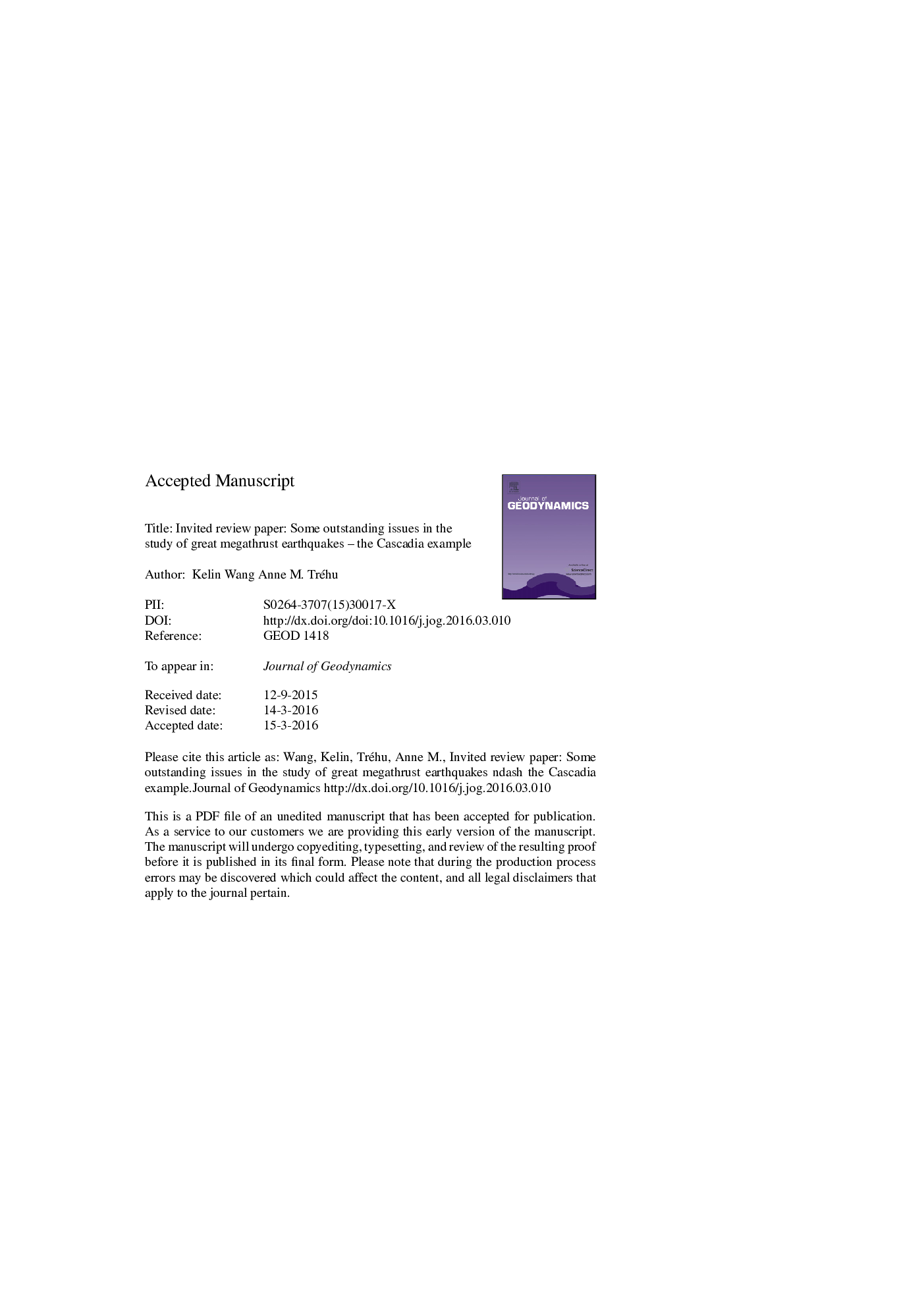| کد مقاله | کد نشریه | سال انتشار | مقاله انگلیسی | نسخه تمام متن |
|---|---|---|---|---|
| 4687929 | 1635752 | 2016 | 53 صفحه PDF | دانلود رایگان |
عنوان انگلیسی مقاله ISI
Invited review paper: Some outstanding issues in the study of great megathrust earthquakes-The Cascadia example
دانلود مقاله + سفارش ترجمه
دانلود مقاله ISI انگلیسی
رایگان برای ایرانیان
موضوعات مرتبط
مهندسی و علوم پایه
علوم زمین و سیارات
فرآیندهای سطح زمین
پیش نمایش صفحه اول مقاله

چکیده انگلیسی
Because of a combination of new observational tools and a flurry of large megathrust earthquakes, tremendous progress has been made in recent years towards understanding the process of great subduction earthquakes at Cascadia and other subduction zones around the world. This review article attempts to clarify some of widely used geodynamic concepts and identify the most important scientific questions for future research related to megathrust behaviour. It is important to specify how the megathrust seismogenic zone has been defined when comparing data and models. Observations and concepts currently used to define the seismogenic zone include: (A) the stability transition in rate-and-state dependent friction; (B) the slip zone of large interplate earthquakes; (C) the distribution of small-medium earthquakes; and (D) the geodetically-determined zone of fault locking. Land-based geodetic measurements indicate that the Cascadia megathrust is locked to some extent, but the degree of locking is not well constrained. The near absence of detectable interplate seismicity, with the exception of a segment near 44.5°N and near the Mendocino Triple Junction, is presently interpreted to indicate full locking along most of Cascadia. Resolving the locking state requires seafloor geodetic measurements. The slip behaviour of the shallowest segment of the megathrust and its tsunamigenic potential are complex and variable. Structural studies combined with modeling have the potential to improve our understanding of the signature left in the structure by the slip history. For several reasons, but mostly because of interseismic viscoelastic stress relaxation, the downdip limit of megathrust locking cannot be reliably constrained by geodetic data. Independent information is needed on the composition and thermal state of fault zone materials. The spatial relationship between the seismogenic zone and the zone of Episodic Tremor and Slip (ETS) remains controversial. Observations from the Nankai subduction zone and the San Andreas Fault suggest that ETS does not mark a simple spatial transition from seismic to aseismic behaviour and that multiple transitions may be present because of petrological and rheological changes with depth. Coseismic rupture in the AD 1700 Cascadia earthquake has been shown to vary along strike, and it is important to investigate whether the position of boundaries between high slip and low slip are stationary with time (and therefore probably geologically controlled) and are reflected in current interseismic locking of the megathrust.
ناشر
Database: Elsevier - ScienceDirect (ساینس دایرکت)
Journal: Journal of Geodynamics - Volume 98, August 2016, Pages 1-18
Journal: Journal of Geodynamics - Volume 98, August 2016, Pages 1-18
نویسندگان
Kelin Wang, Anne M. Tréhu,